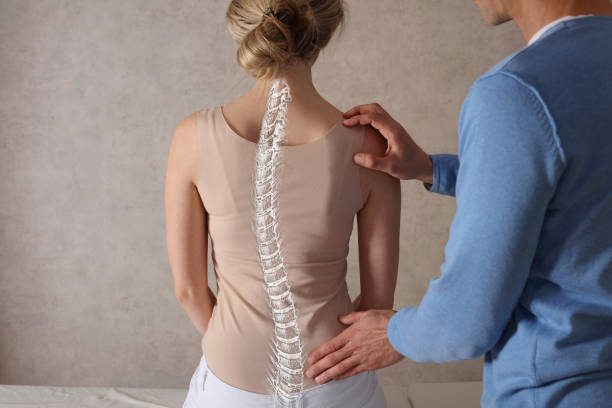
How Rolfing Can Help With Scoliosis
Scoliosis affects both adults and adolescents and is a condition in which the spine is abnormally curved to one side.
This curvature and the compensatory patterns of movement that the body adopts in order to compensate for said curvature, can in fact lead to a number of imbalances in the body, including muscular asymmetries, as well as changes in joint mobility and range of motion. This condition is hence often marked by a degree of pain and discomfort.
Rolfing® (Structural Integration) as named by Dr. Ida P. Rolf, is a form of manual therapy that seeks to improve posture and alignment by manipulating and reorganising the fascia, the connective tissue that surrounds and runs through the muscles, bones, and organs in the body.
Here are a few ways in which Rolfing for scoliosis may be able to complement a client’s scoliosis treatment!
- Improve alignment and balance for better posture and spinal symmetry
Since some muscles are often overworking, or underused trying to compensate for the abnormal spinal curvature, scoliosis often leads to muscular tension and asymmetries in muscle strength, flexibility and tone. An example of this would be the common tendency for scoliotic patients to collapse into the concave side of their spine in their default/neutral positions. By releasing these tensions and restrictions in the fascia, and evening out the tone of the muscles, rolfing can help the muscles on either side of your spine and the body’s overall posture to align in a more optimal and balanced position.
In simpler terms, by lengthening and loosening the connective tissues around your muscles, Rolfing can bring the spine back to more symmetry. This symmetry also serves to reduce premature wear and tear of your spine and hips, improving the longevity of one’s musculoskeletal system.
- Promote awareness of body movements and patterns
Rolfing sessions often begin with an assessment of the client’s posture, alignment, and movement patterns and the client is usually encouraged to be aware of the sensation of the work, and to breathe deeply and relax during the process.
As such, the process of Rolfing helps to promote awareness of body movements and postures by helping people to become more conscious of the way their bodies move, hold tension, and respond to stress. In other words, it can help patients to recognize and adjust compensatory patterns that can exacerbate scoliosis and thus help to prevent further tension or distress.
As sessions progress, the client may be given movement exercises or other homework to help integrate the changes made during the sessions and to learn how to maintain their new structure, making it ideal for those who are looking to improve their overall long term posture and movement efficiency.
- Improve range of motion and flexibility
A key marker of Scoliosis is rigidity, or rather a reduction in range of motion and flexibility in the joints, particularly in the spine. Due to spinal asymmetry, there also tends to be compensatory stiffness in associated limbs: glutes, hamstrings, quads, calves, and also the upper extremities such as the trapezius, shoulders, and arms. By releasing soft tissues that have been held in tension due to scoliosis through a combination of deep tissue massage, joint mobilisation, and stretching, Rolfing can improve the body’s ability to move with ease and alleviate the pain caused by chronic stiffness and tightness.
- Complements established treatments for reducing spinal curvature
When it comes to scoliosis treatment in general, results may differ between adult and adolescent scoliotic patients, as the scoliosis can be more advanced in adults and the spine may have become more fixed in its curvature. However, Rolfing can still be beneficial for adult scoliosis patients, when it comes to alleviating pain and improving mobility.
For adolescent scoliosis patients though, the condition is usually caused by an abnormal growth or development of the spine, and the goal of treatment is to prevent the curvature from getting worse. In such cases, Rolfing may be more effective for adolescent scoliosis patients as the spine is still growing and malleable, and their bodies may respond better to the manipulation of the fascia. It is, however, important to note that Rolfing is a complementary therapy and the effectiveness of Rolfing as a treatment for scoliosis has not been extensively studied, with more research being needed to confirm the benefits of this therapy for this condition.
As such, it should only be used in tandem with other approaches such as physical therapy (especially with Schroth Method techniques) and bracing, but not as a substitute for them.
Hopefully, this article has given you some insight to some of the potential benefits of Rolfing for scoliosis. Rolfing is a dynamic and complex technique, and the work can be intense so it’s essential that the practitioner is trained and experienced, and has a good understanding of scoliosis. Do reach out to us today if you should wish to consult with our experienced team of therapists!
